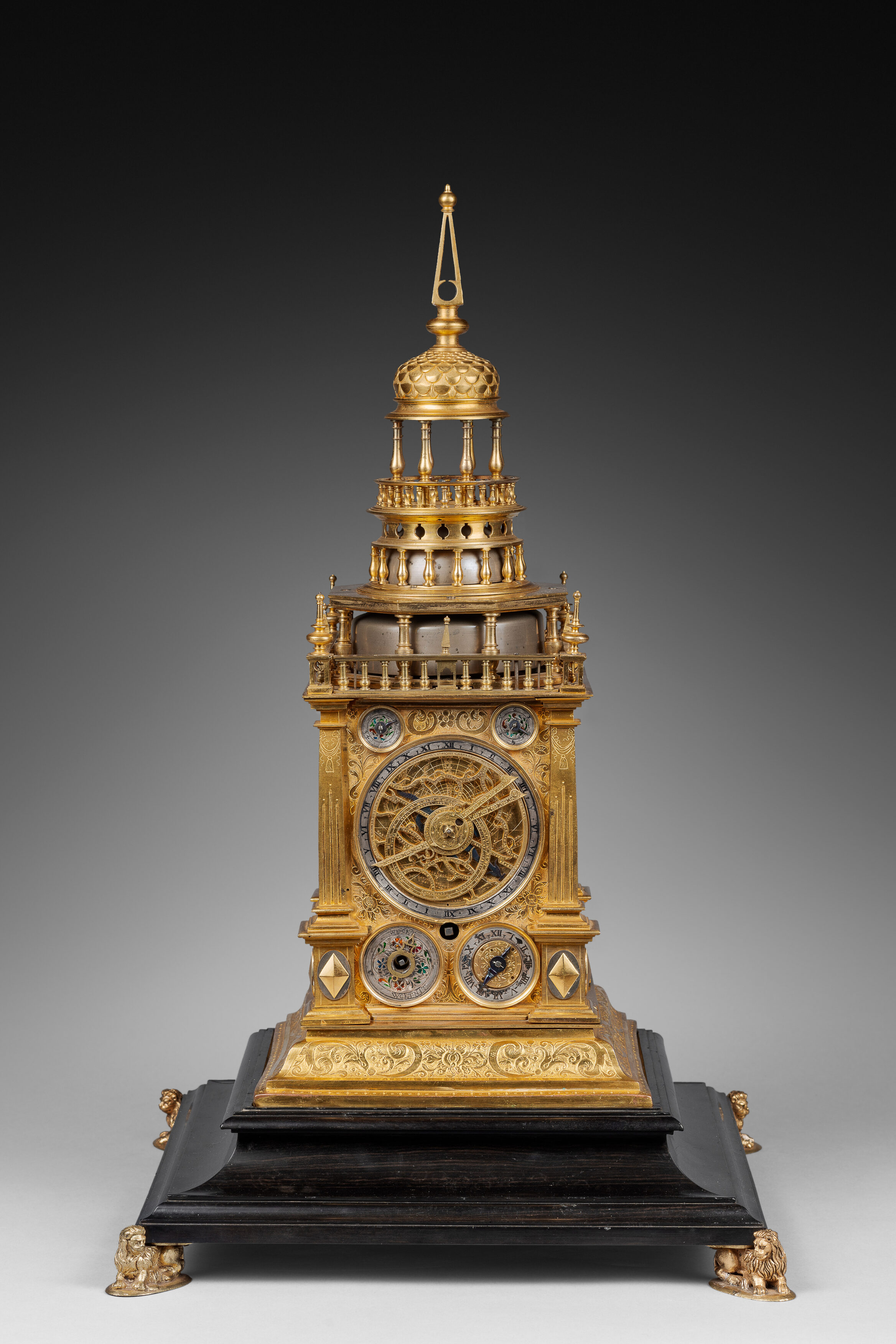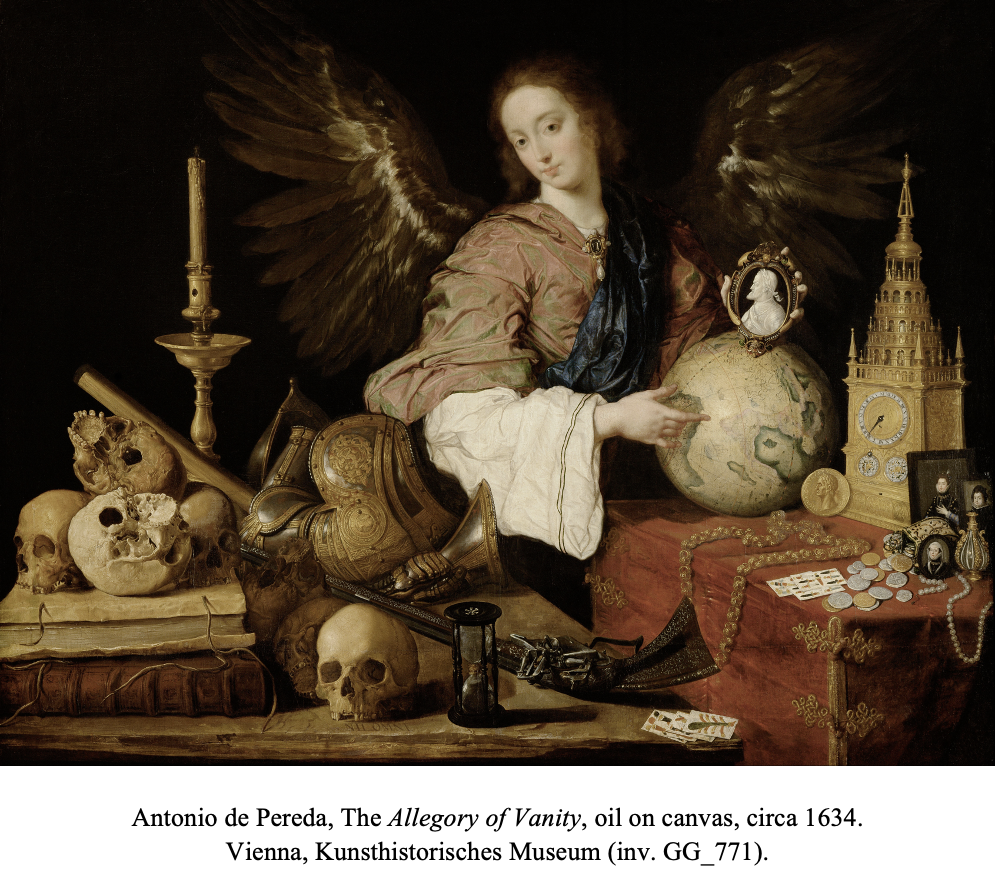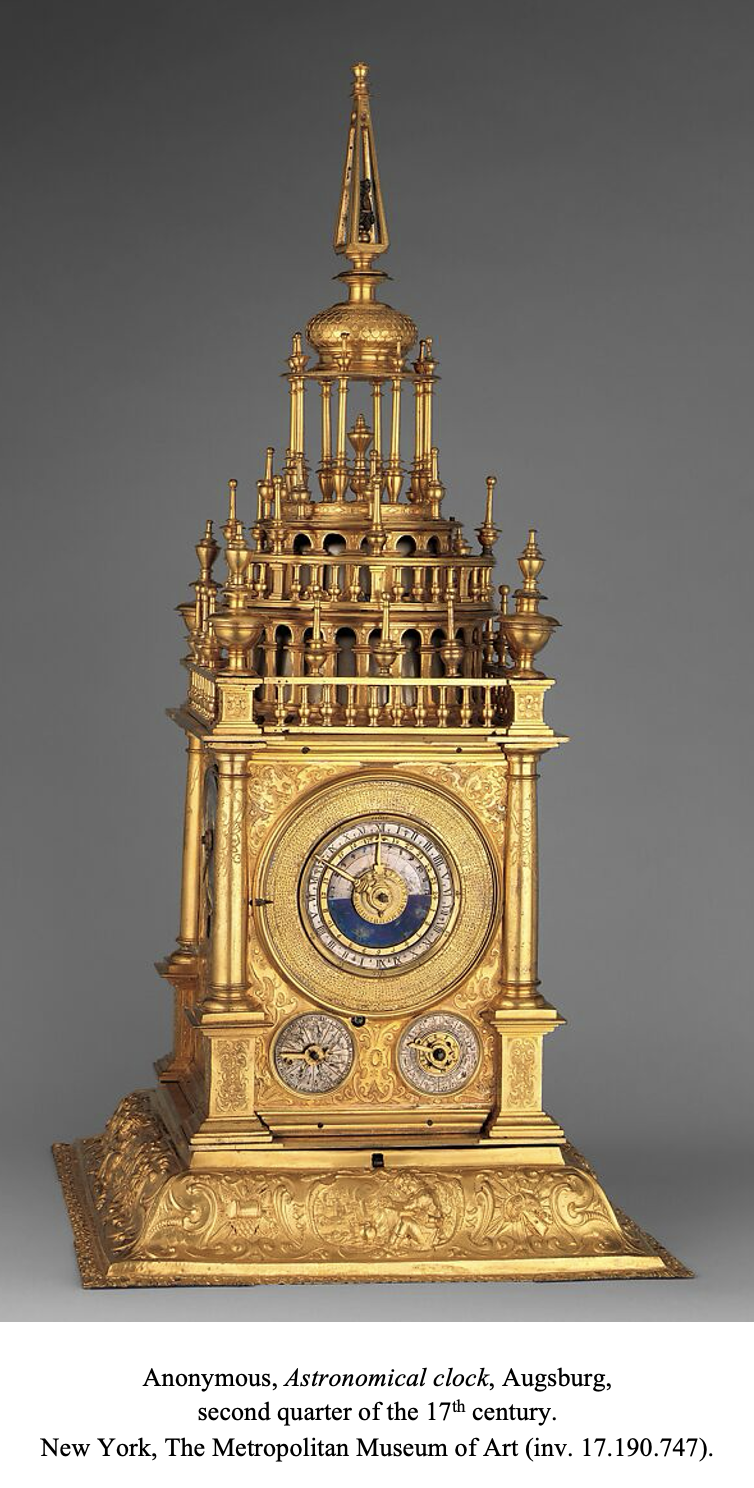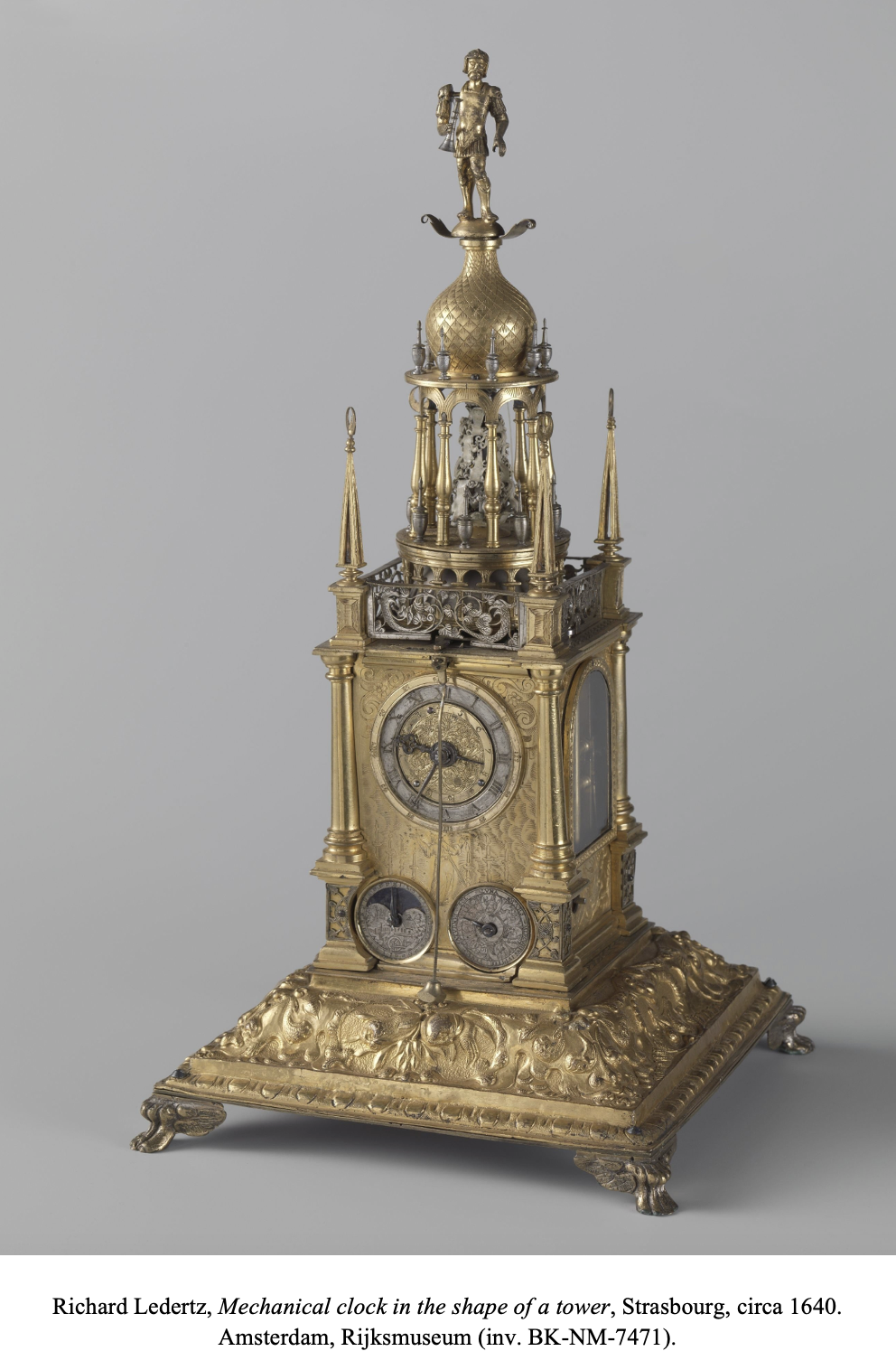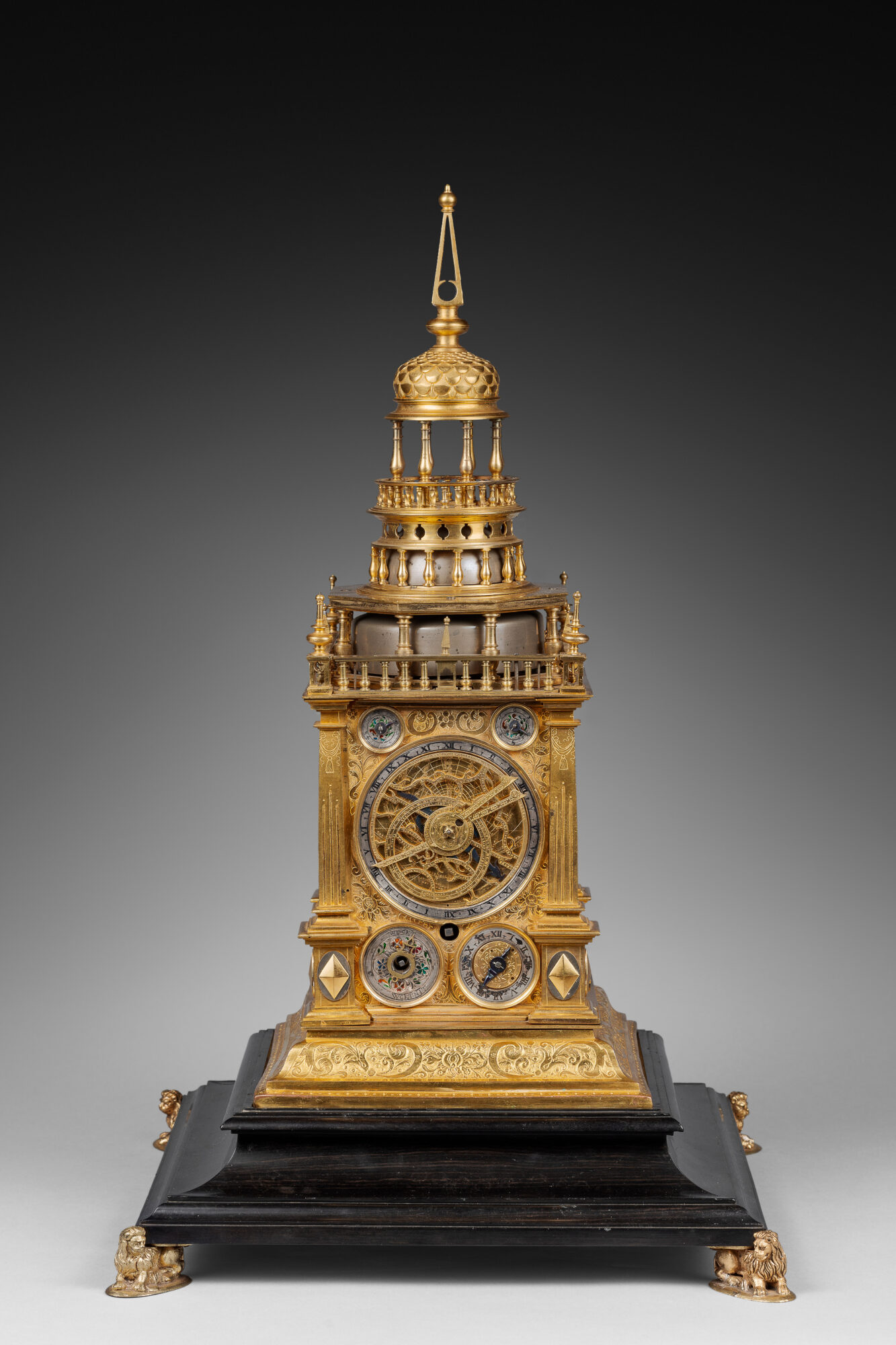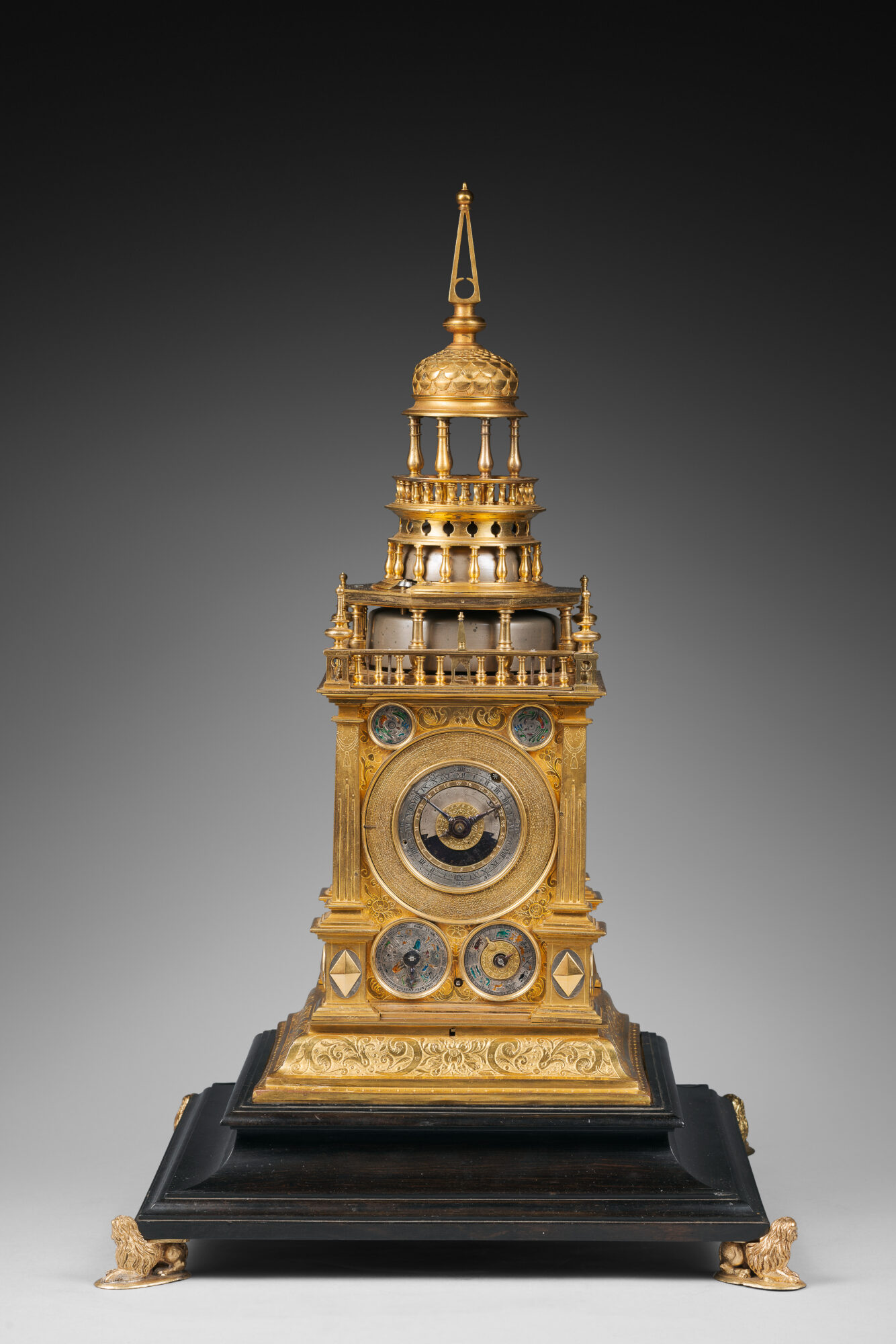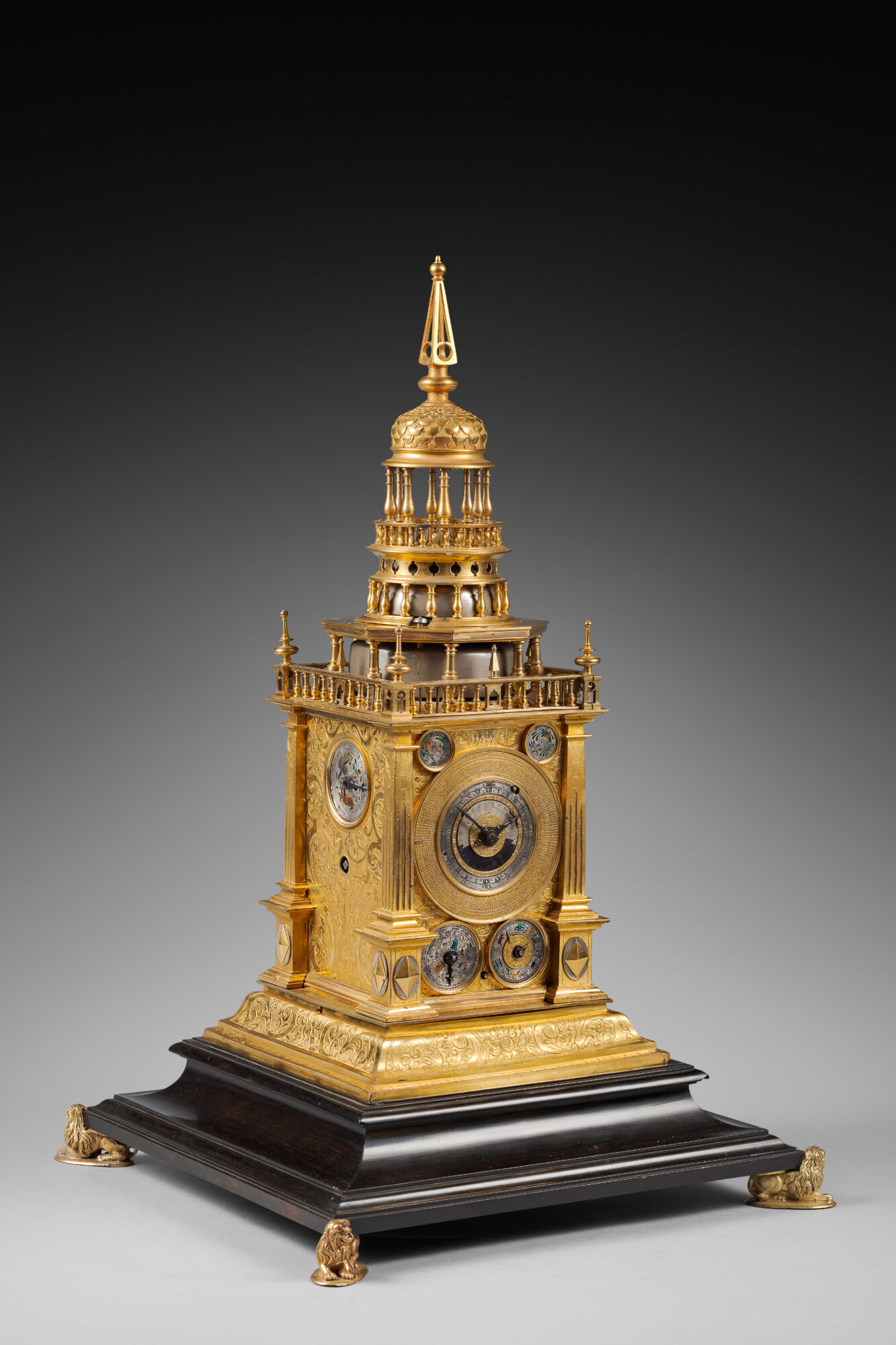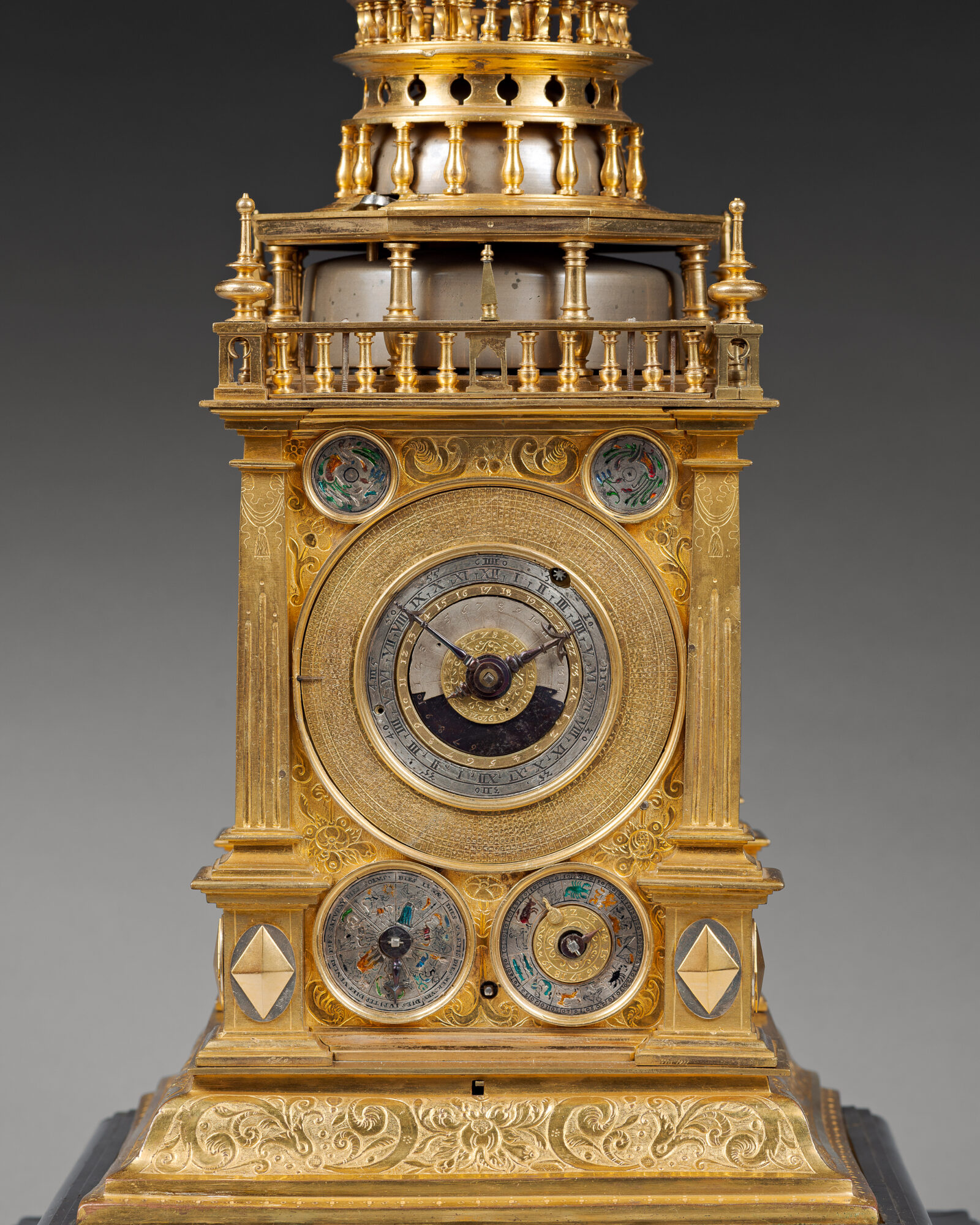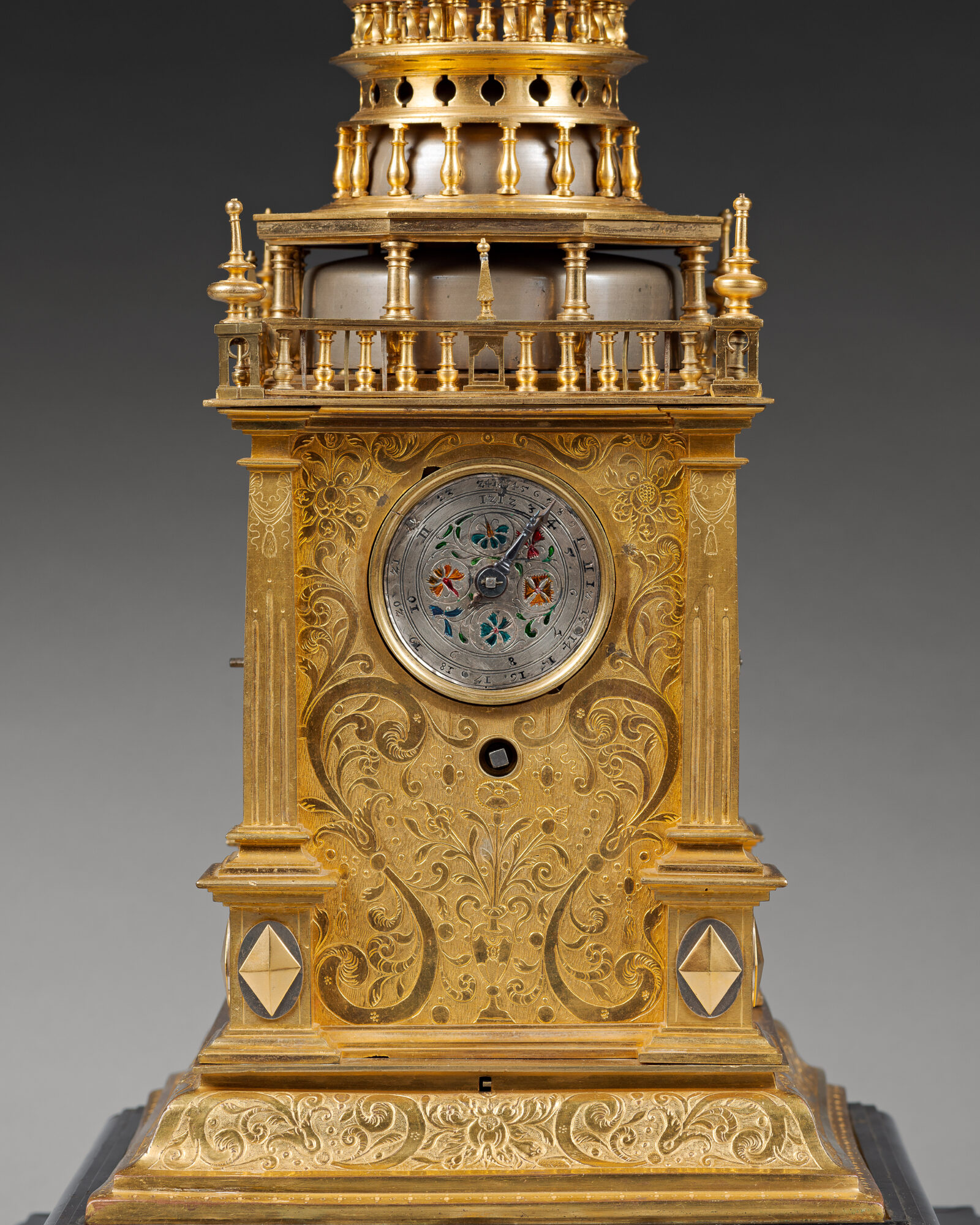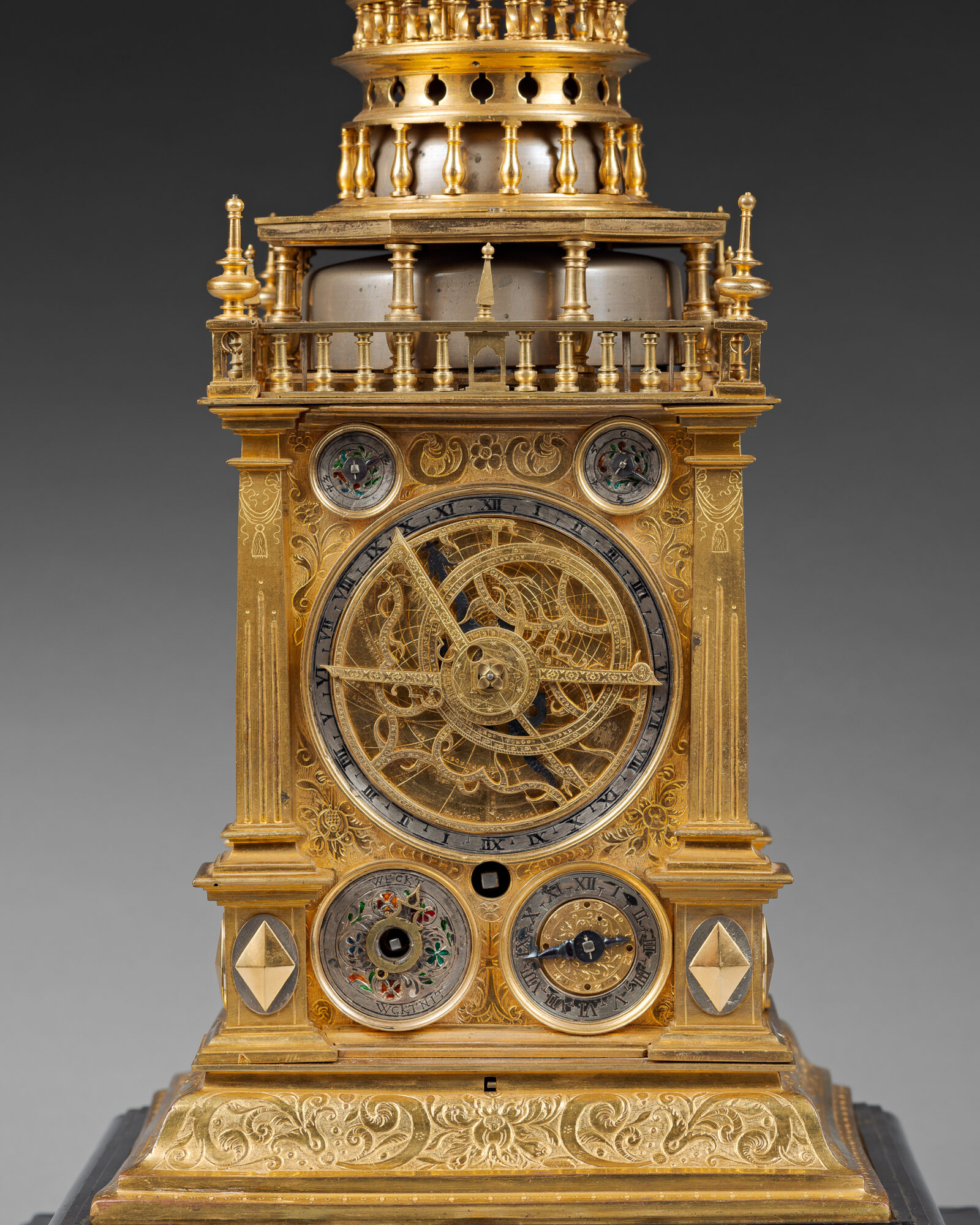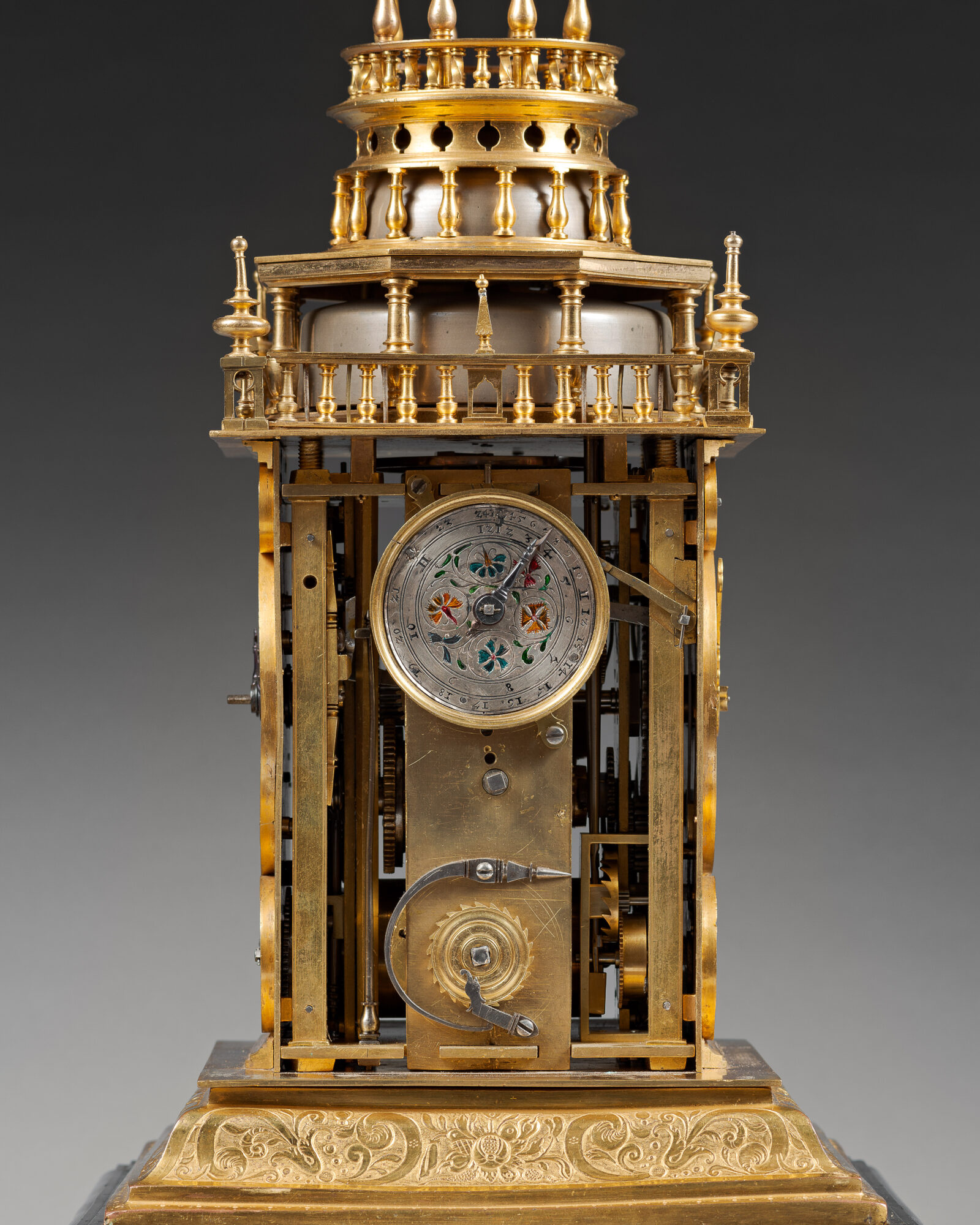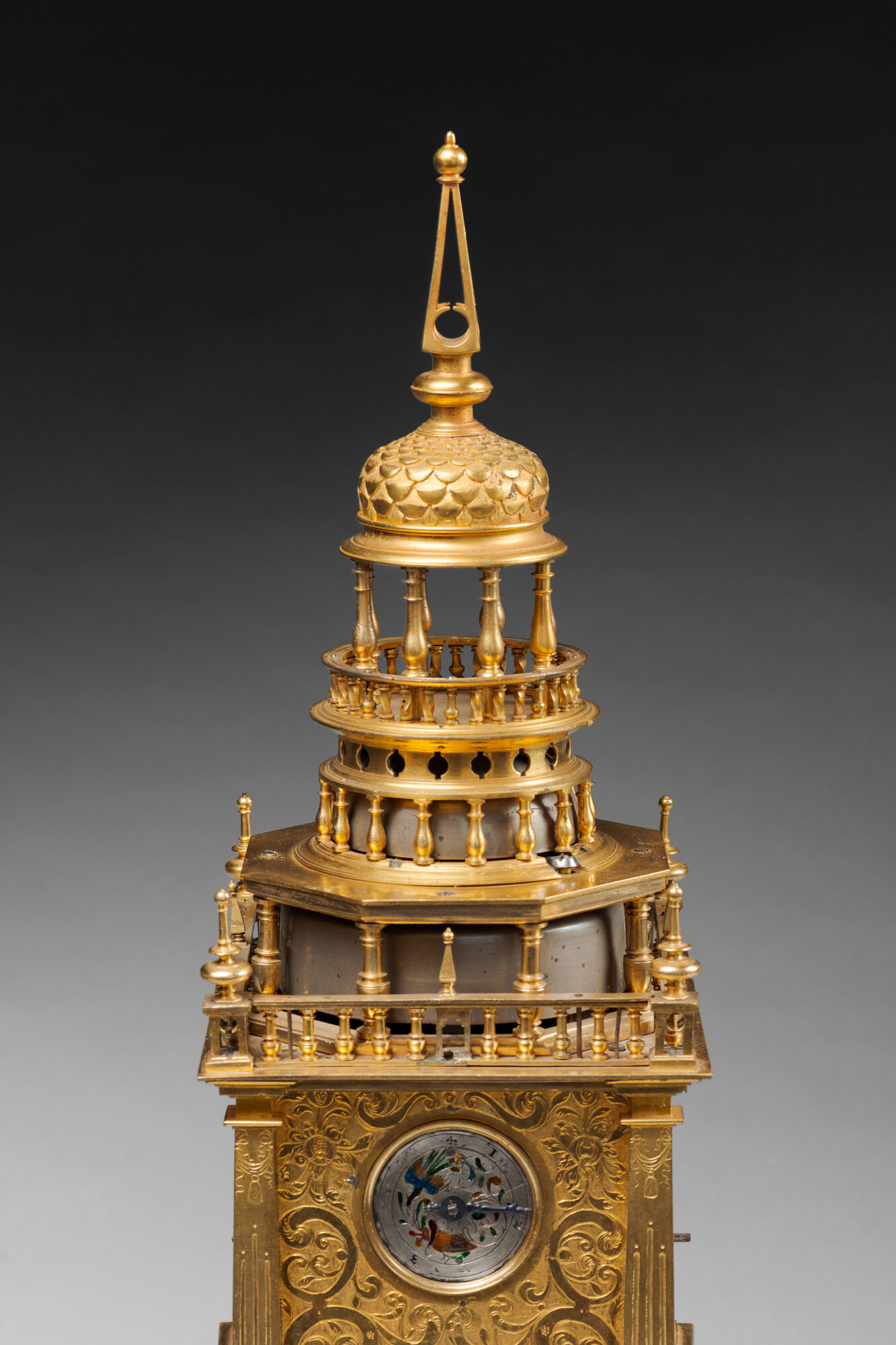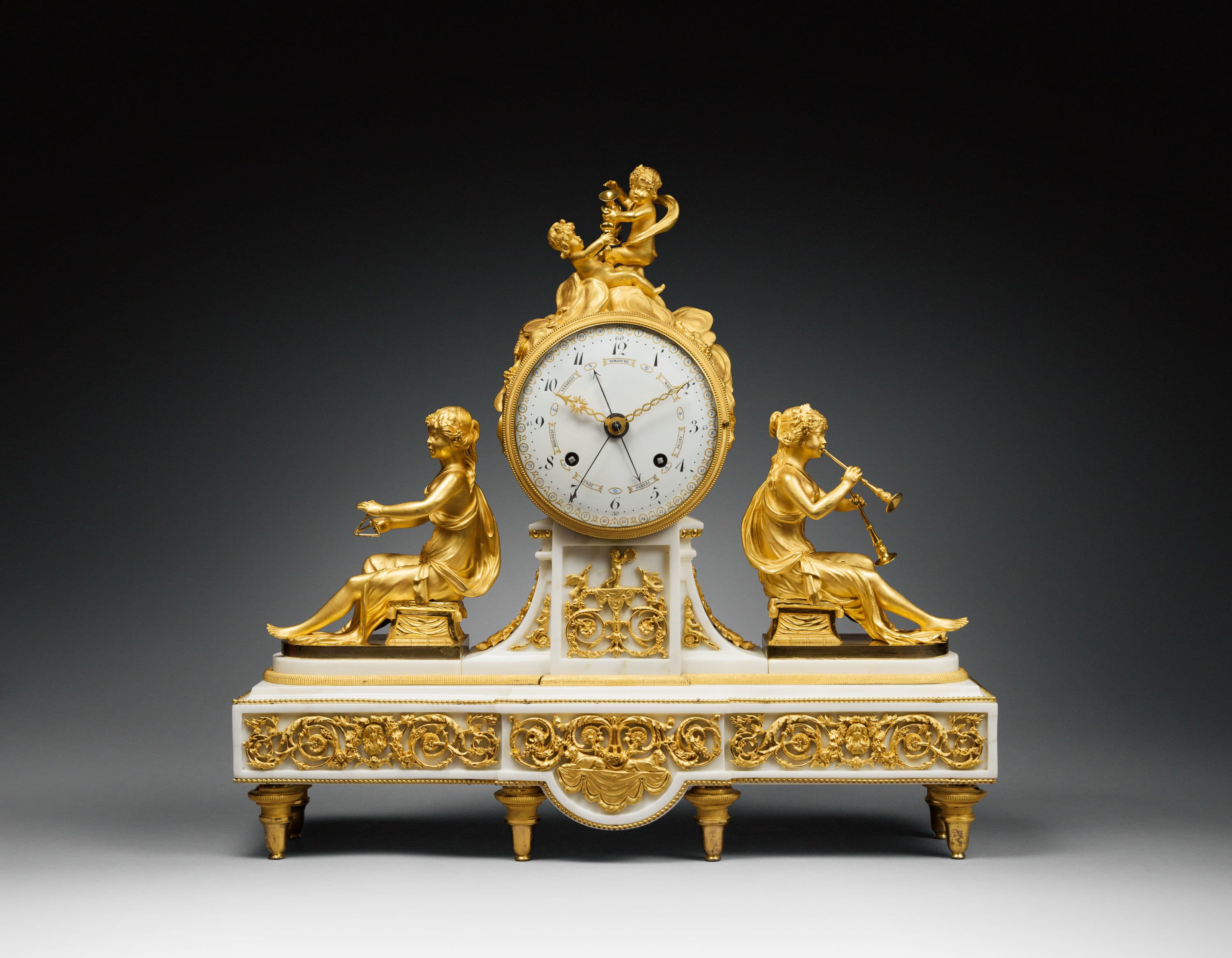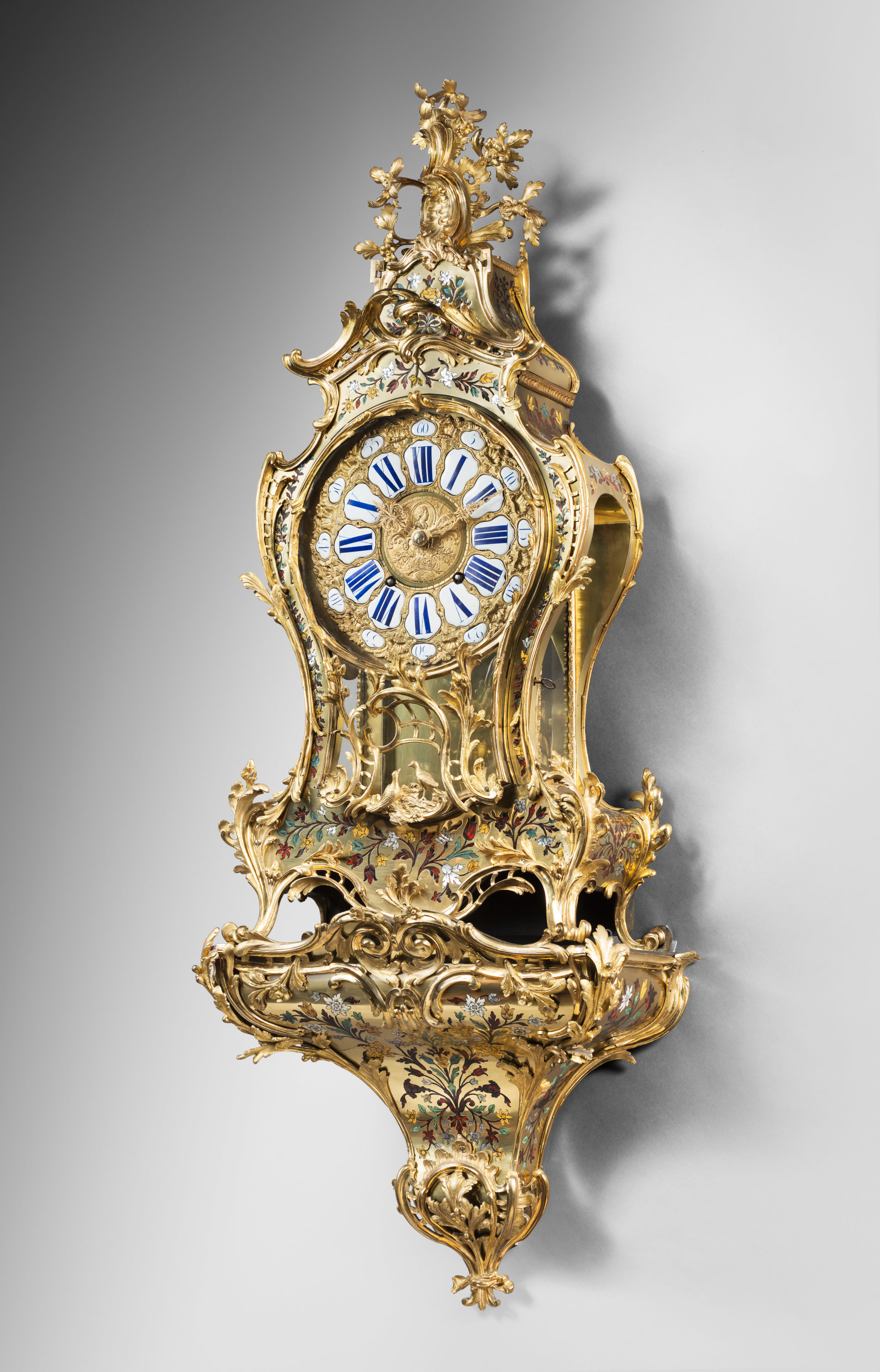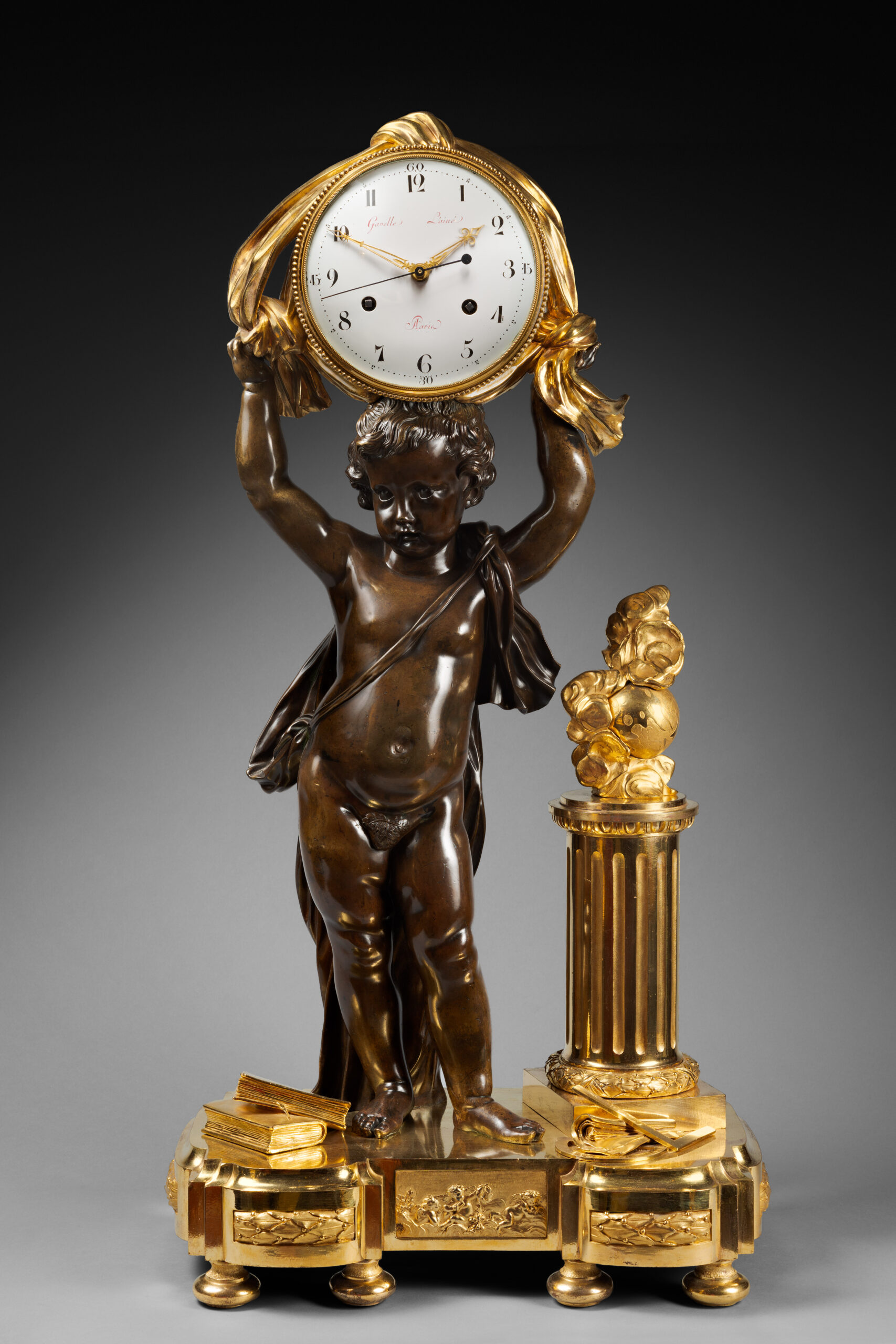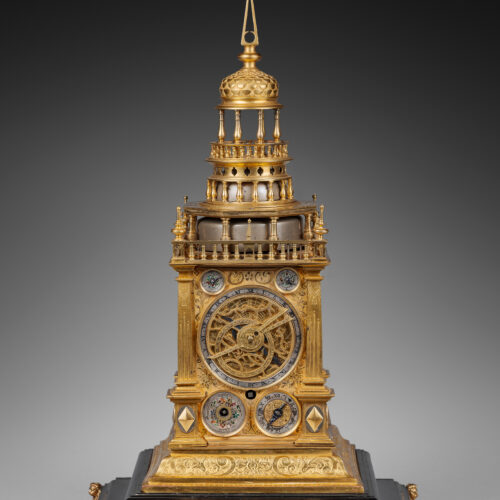Exceptional Astronomical Tower Clock with Astrolabe and Complications
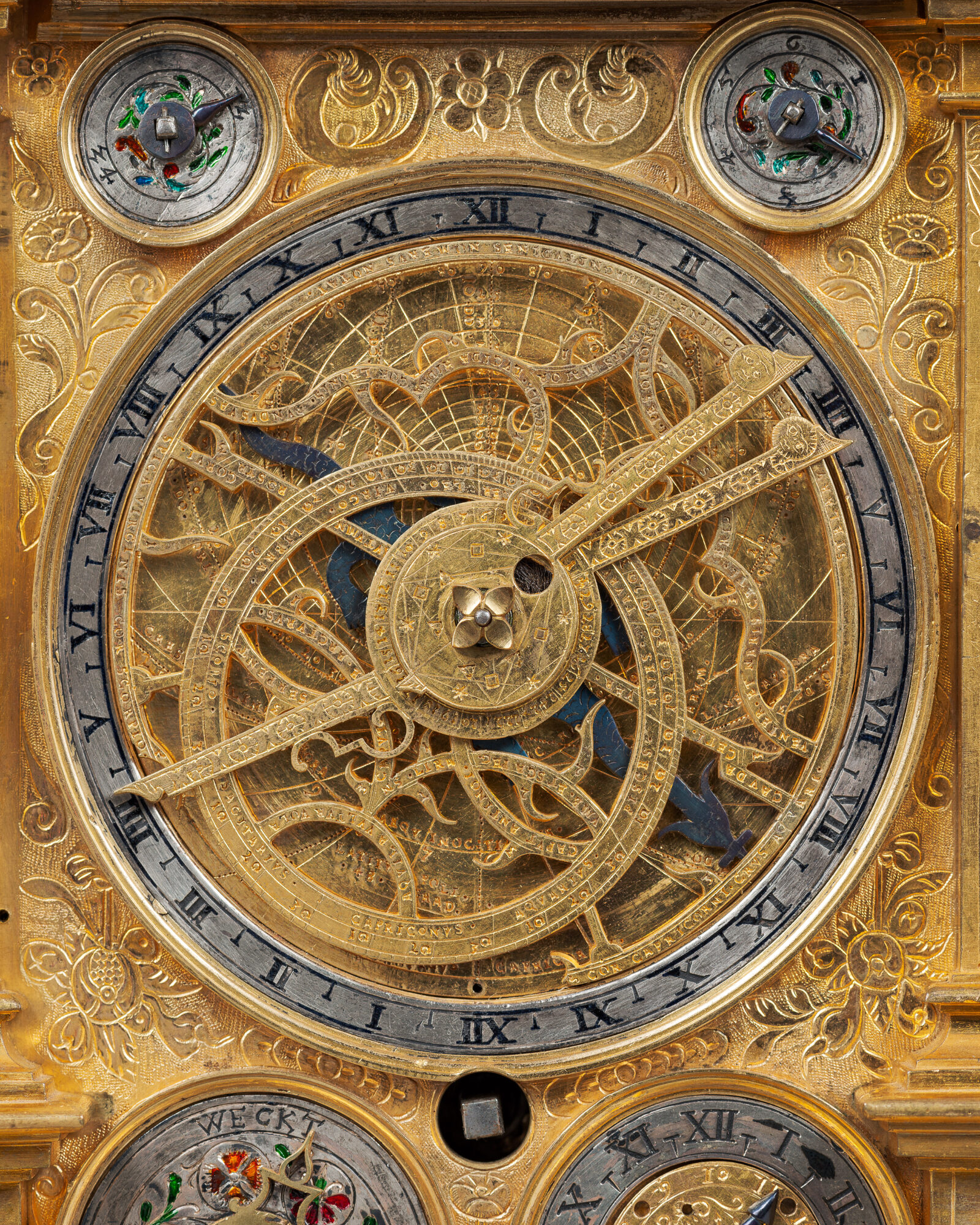
Augsburg (Germany), circa 1600.
Chased and engraved gilt bronze and metal ; partially enameled silver ; ebony.
Brief Bibliography:
– Klaus Maurice, Die deutsche Räderuhr, Zur Kunst und Technik des mechanischen Zeitmessers im Deutschen Sprachraum, Munich, Verlag C.H. Beck, 1976.
– Klaus Maurice et Otto Mayr, Die Welt als Uhr, Deutsche Uhren und Automaten, 1550-1650, Munich Bayerisches Nationalmusem, 1980.
– Norbert Tieger, Horloges anciennes, Paris, Flammarion, 2008 (p 62 – 63).
The clock shown here is in the shape of a tower. Its architectural structure and the height of the sides, framed by fluted pilasters, provide an ideal surface for harmoniously arranging the various dials.
The central part of the case contains the three-train movement; the bells that strike the hours and quarters are located in the upper part. The whole can be pivoted on an ebony pedestal.
The astrolabic dial is driven by an epicyclic gear train (also known as a planetary gearset) consisting of a gearwheel driven by the hours’ gear train and completing one complete revolution in eight hours. The astrolabe, designed for the latitude of 48°, which is the latitude of Augsburg in particular, gives the position of 24 stars.
The various hands indicate the position of the sun and the moon respectively; the hand indicating the nodal points of the moon can be used to predict eclipses; the four small silver dials at the corners can be used to set the clock by adjusting the amplitude of the foliot, to set the bells for 12 or 24 hours, and to set and arm the alarm clock.
The concentric circles of the second large dial show the hours, minutes, sunrise, sunset and length of day. The very large gilt disc, which surrounds this dial and was flipped every six months, shows the calendar with the feasts of the saints. The partially enameled silver dials at the bottom corners show the days of the week, the Zodiac signs and the axis of the moon throughout the months. The dials on the side faces show the last hour and quarter that were struck.
The clocks that appeared at the beginning of the Renaissance added to the simple indication of the measurement of Time, the sophistication of the main dial designed as a working astrolabe. Additional indications relating to the celestial order, such as the lunar calendar or the Zodiac, appeared on small specific dials. These monuments, dedicated to the measurement of Time and the representation of the complexity of the universe, have always been key objects in the cabinets of curiosity, or Kunstkammer, and were prized as such by the great and the rich.
Here, the uniqueness of the gilt metal case, combined with a complex variety of calendar and astronomical data, thanks to various auxiliary dials, make this clock an absolute work of art.
Its perfection is due to the indisputable innovations and artistic achievements of the South German clockmakers of the Renaissance. They had a virtual monopoly on the manufacture of astrolabe clocks, an activity that made them famous for more than a century. In this circle of highly technical craftsmen, those from Augsburg stood out, their success and prestige were recognized by the scientific world and the curious. Their clocks, objects of great luxury, were exported throughout Europe. They were designed not only to measure time, but also to educate and impress.
As early as 1558, these aspects led their main creators, the clockmakers of the city of Augsburg, to found a corporation to preserve their manufacturing monopoly. This phenomenon of the creation of monopolistic guilds was in action almost everywhere in Europe. Around the same time, guilds of this kind were founded in Lyon and Paris, although their membership was initially small. In order to join their body, they required candidates for mastery to execute a masterpiece.
In Augsburg, the statutes of 1558, revised in 1577, required the execution of “a spring-powered clock movement, striking quarters, with an alarm, a mechanically driven astrolabe and mechanisms indicating the length of the day (Nuremberg time), the day of the year (calendar) and the days of the week (and the planets with their signs). All these dials had to be linked together, and their hands had to turn in accordance with the main dial’s hands.
This unsigned work is one of the masterpieces produced for admission to the Augsburg guild of clockmakers. It meets all the technical requirements specified in the statutes.
A very similar clock, in the form of a tower with an obelisk, is depicted in a painting by Antonio de Pereda (1611-1678) in the Kunsthistorisches Museum in Vienna. Its presence underlines the status of Augsburg and Nuremberg as major European centers for clockmaking in the 16th and early 17th centuries, and the export of these luxury products throughout Europe.
Clocks of the same design and similar appearance are kept at the Rijksmuseum in Amsterdam, the Bayerisches Nationalmuseum in Munich, the Metropolitan Museum in New York and the Historisches Uhrenmuseum in Wuppertal.
